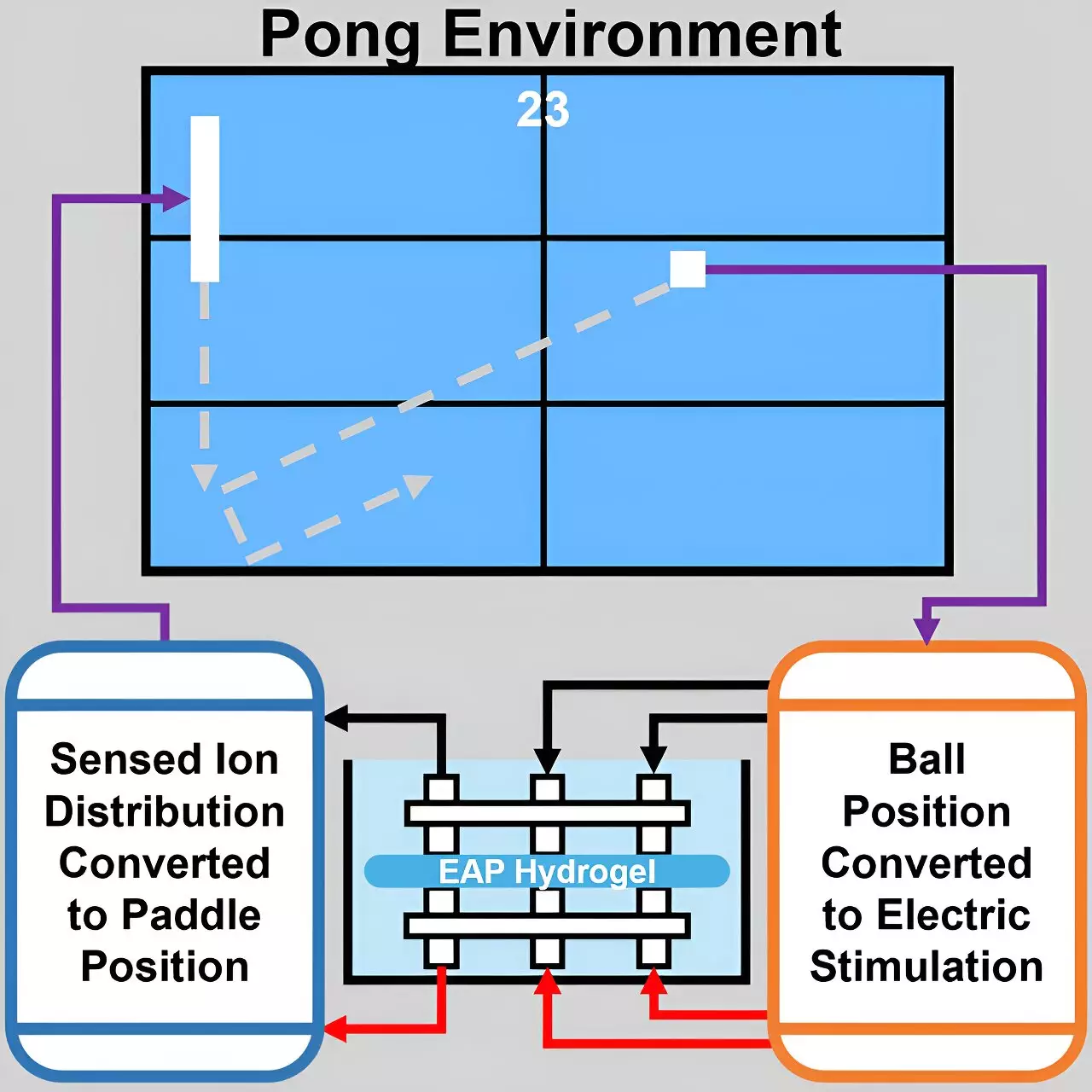Recent advancements in material science have unveiled the potential of hydrogels to exhibit learning behaviors previously thought to be exclusive to more complex systems, including biological organisms and advanced artificial intelligence algorithms. In a noteworthy study published on August 22 in Cell Reports Physical Science, Dr. Yoshikatsu Hayashi and his team at the University of Reading have demonstrated that a basic hydrogel can learn to play the iconic game “Pong.” This discovery not only reshapes our understanding of material capabilities but also opens a pathway toward the development of intelligent materials that interact with their environment in unprecedented ways.
The primary objective of this research was to investigate whether rudimentary materials can demonstrate complex behaviors akin to those seen in living systems. By interfacing the hydrogel with a computer simulation of Pong through a specially designed multi-electrode array, the researchers were able to observe the hydrogel’s progressive improvement in gameplay performance over time. Dr. Hayashi noted the significance of this finding, stating that such simple materials can display adaptive behavior echoing that of living organisms or sophisticated AI models. This finding paves the way for innovation in smart materials that could revolutionize numerous fields.
At the heart of the hydrogel’s learning capability lies the movement of charged particles within the material when subjected to electrical stimulation. This ionic migration leads to the formation of a rudimentary memory mechanism, reconciling the material’s response with its performance in the game. The first author of the study, Vincent Strong, emphasized that ionic hydrogels can mimic the memory functions of more complex neural networks, reinforcing the idea that intelligence can manifest in diverse forms, not just within traditional AI frameworks.
Their research seeks to demystify the underlying principles that govern the learning processes in both artificial systems like hydrogels and biological systems such as neuronal networks. The comparison highlights how both systems utilize ion movements—internally in neurons and externally in hydrogels—to establish sensory-motor loops necessary for interaction with their environments.
This newfound material intelligence raises compelling questions about the future of artificial intelligence. The capabilities observed in hydrogels suggest that we might be able to create algorithms that are simpler than contemporary neural network systems yet capable of genuine learning and adaptation. By diverging from the complexities associated with biological inference circuits, these hydrogels present a unique opportunity to explore alternative frameworks for intelligence in materials science.
Moreover, the research team’s findings hold potential significance beyond gaming simulations. The inherent adaptive properties of hydrogels could inspire new approaches to soft robotics, where materials can respond dynamically to environmental stimuli, leading to enhanced robotic autonomy. The adaptability of such materials also hints at their application in prosthetics, where responsive, smart materials could dramatically enhance the functionality and integration of artificial limbs.
Further pushing the boundaries of hydrogel research, the team also demonstrated that these materials can be synchronized with external pacemakers to mimic the rhythmic contractions of heart muscles. This remarkable feat marks a turning point in cardiac research, moving away from reliance on living cells and opening avenues for mechanical and chemical inquiries into heart functions. Lead author Dr. Tunde Geher-Herczegh explained that understanding oscillatory behavior in hydrogels could lead to breakthroughs in managing cardiac arrhythmias, which affect millions of individuals globally.
The study of hydrogels as a methodological alternative in cardiac research not only holds promise for refining therapeutic approaches but also posits a shift towards ethically sound practices by potentially reducing the need for animal experimentation. This aspect of the research underscores the broader implications of hydrogels as safe and reproducible platforms for studying complex biological processes.
The interdisciplinary collaboration bridging neuroscience, material science, and cardiac research underscores a pivotal belief among the research team: the principles governing learning and adaptation in living organisms can be universal across various materials. As the team looks to develop more complex behaviors and evaluate real-world applications, their work challenges the prevailing paradigms of intelligence and adaptation.
Future research initiatives will delve deeper into the fundamentals underpinning the memory mechanisms of hydrogels. This exploration could yield innovative applications ranging from environmental sensing—where materials detect and respond to pollutants—to the development of dynamic, responsive infrastructures. The quest for smart materials capable of learning and adapting is just beginning, poised to unravel exciting horizons in technology, medicine, and beyond.


Leave a Reply